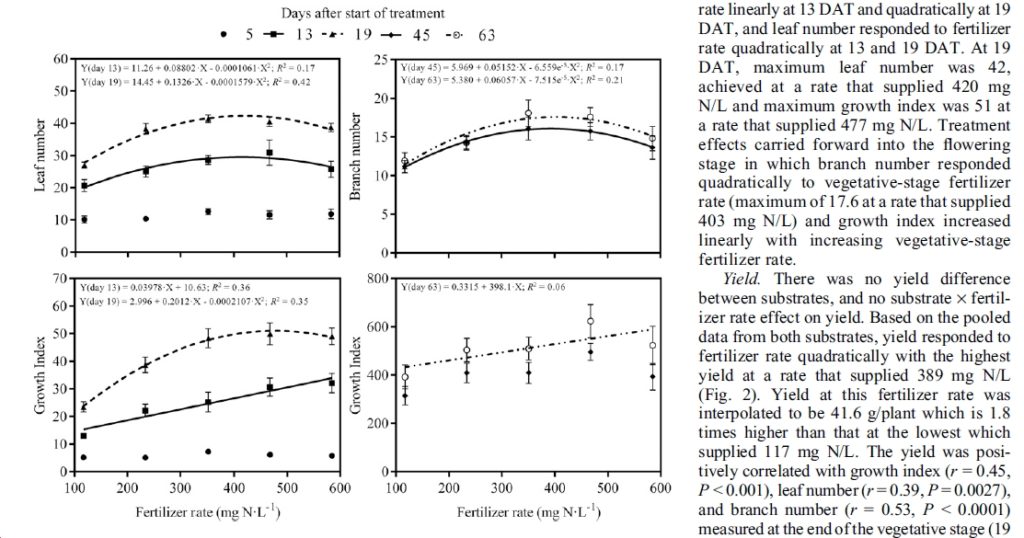
Deron Caplan, Mike Dixon, and Youbin Zheng,
School of Environmental Sciences, University of Guelph, Guelph, ON N1G
2W1, Canada
Additional index words. Cannabis sativa, cannabis growth, floral dry weight, marijuana, THC,
CBN
Abstract. Cannabis producers, especially those with organic operations, lack reliable information on the fertilization requirements for their crops. To determine the optimal organic fertilizer rate for vegetative-stage cannabis (Cannabis sativa L.), five rates that supplied 117, 234, 351, 468, and 585 mg N/L of a liquid organic fertilizer (4.0N–1.3P–
1.7K) were applied to container-grown plants with one of two coir-based organic substrates. The trial was conducted in a walk-in growth chamber and the two substrates used were ABcann UNIMIX 1-HP with lower water-holding capacity (WHC) and ABcann UNIMIX 1 with higher WHC. No differences in growth or floral dry weight
(yield) were found between the two substrates. Pooled data from both substrates showed that the highest yield was achieved at a rate that supplied 389 mg N/L (interpolated from yield-fertilizer responses) which was 1.8 times higher than that of the lowest fertilizer rate. The concentration of Δ9-tetrahydrocannabinol (THC) in dry floral material was
maximized at a rate that supplied 418 mg N/L, and no fertilizer rate effects were observed on D9 tetrahydrocannabidiolic acid (THCA) or cannabinol (CBN). The highest yield, cannabinoid content, and plant growth were achieved around an organic fertilizer rate that supplied 389 mg N/L during the vegetative growth stage when using the two coir*based organic substrates.